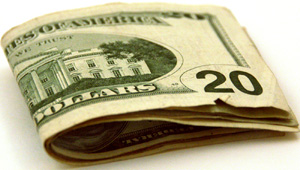 Most families spend a great deal of time trying to save money. When the bills come, they debate and argue about all sorts of expenditures. However, many of these arguments can be avoided or lessened by just paying closer attention to spending during the rest of the month.
Most families spend a great deal of time trying to save money. When the bills come, they debate and argue about all sorts of expenditures. However, many of these arguments can be avoided or lessened by just paying closer attention to spending during the rest of the month.
The Problem
It’s amazing how fast small expenditures can add up if they are not tracked. A couple will get up in the morning to take junior to the soccer game in the next town over. Dad asks, “What are we having for breakfast?” To which Mom replies, “We can get something on the way.” Junior chimes in, “I want a chocolate doughnut and some apple juice. Oh, and I need a bottle of water for the game.”
So it’s off to the coffee shop. Two breakfast sandwiches, two large cups of coffee, a doughnut, a bottle of juice and a bottle of water later, the clerk says, “that’ll be $19.50.” Mom’s happy because they went to the drive-thru window and didn’t have to leave a tip.
After the game, Junior reports that coach wants to buy the team an ice cream cone. Dad’s all for it, but knows he won’t let coach buy for Mom and himself. Two ice cream cones with sprinkles come to $9.20. After ice cream, Mom wants to stop by the supermarket and Dad needs to make a quick trip into the home improvement store. Now it’s lunch time. Junior wants a hamburger and Mom has been craving a fish sandwich, so they stop at the burger joint and drop $26.60 for a crappy lunch. At each stop, it’s no big deal, but later, they can’t remember where that $55.30 went.
The Resolution
Upon reading a story like the one above, most people will look at the $52.30 spent. They’ll discuss how much money could have been saved by getting up 15 minutes earlier and having breakfast at home. They’ll ask why Junior doesn’t have a refillable water bottle. Did Mom and Dad really need to have ice cream? They’ll reminisce about the days when that lunch could be had for less than $15.
While those are all valid points, the real issue lies in the fact that no one was responsible enough to account for these expenses before the alarm clock sounded that morning. Mom or Dad should have decided to set a certain amount of money as the extent they would spend that day. They should also have taken some sort of log book and made a detailed account of where the money was spent. Had they taken, say, $20 and set that as the limit, they may have opted for breakfast before they left, probably avoided the ice cream cones and definitely had lunch at home.
Nobody wants to be a killjoy and worry about the small day to day expenses. However, keeping track of them can and will save the average family a great deal of money. Always knowing how much money is available, how much you intend to spend at a given time and how much you are actually spending can save a great deal of heartache at bill paying time, and perhaps put a smile on your face when you avoid some needless spending!
About the author: John Tilden likes to write about parenting, finance and the resources available at www.creditscore.net.